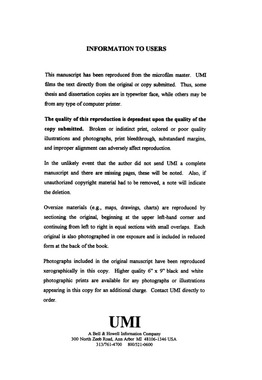| dc.contributor.author | Work, Kirsten Ann. | en_US |
| dc.date.accessioned | 2013-08-16T12:29:44Z | |
| dc.date.available | 2013-08-16T12:29:44Z | |
| dc.date.issued | 1997 | en_US |
| dc.identifier.uri | https://hdl.handle.net/11244/5490 | |
| dc.description.abstract | In Chapter 1, I present the initial data on the distribution and abundance of Daphnia lumholtzi during the summer of 1993. Lake Texoma has variable and often strong horizontal gradients in temperature, conductivity, and turbidity, and the spatial distribution of D. lumholtzi was heterogenous along the long axis of the reservoir. Therefore, in Chapter 2 I measured the response of D. lumholtzi to some of the environmental variables that exhibit the strongest gradients using culture experiments. In Chapter 3, I tested the patterns that I observed in the short pilot study and in the culture experiments with field sampling for one year. I only observed large densities of D. lumholtzi during the warmest part of the year when the native zooplankton populations had declined. Therefore, in Chapter 4 I evaluated how the response of D. lumholtzi compared with two native species, Daphnia galeata and Ceriodaphnia lacustris. | en_US |
| dc.description.abstract | As mentioned previously, Daphnia lumholtzi only occurred at high abundances in mid summer. It also showed a trend of declining abundance toward the dam, which is the least variable area of the lake with respect to many environmental measurements. Both of these trends are consistent with the ecological origins of the species. Daphnia lumholtzi is a subtropical species that is likely to be able to tolerate warmer temperatures than zooplankton from North America, which probably evolved in the cooler natural lakes further north. Furthermore, the spatial distribution of the species in Lake Texoma indicates that D. lumholtzi can tolerate high physical and chemical variability. Most of the reports of the species from its native range are from disturbed habitats, such as ephemeral and wastewater ponds and reservoirs. | en_US |
| dc.description.abstract | Daphnia lumholtzi is exotic to North America. Its original distribution included eastern Australia, central Asia, and eastern Africa. It was first found in the US in 1991 in Texas and I first found D. lumholtzi in Lake Texoma in 1992. Since its initial introduction, its range has expanded to include most of the southern half of the US. The purpose of this dissertation was to determine which factors have allowed this exotic species to invade the zooplankton population of Lake Texoma. The native zooplankton include: Daphnia galeata, Daphnia parvula, Diaphanosoma leuchtenbergianum, Bosmina longirostris, Ceriodaphnia lacustris, Cyclops bicuspidatus thomasi, Mesocyclops edax, Eurytemora affinis, Diaptomus siciloides, and many rotifer species. | en_US |
| dc.format.extent | xiii, 119 leaves : | en_US |
| dc.subject | Biology, Limnology. | en_US |
| dc.subject | Daphnia. | en_US |
| dc.subject | Zooplankton Texoma, Lake (Okla. and Tex.) | en_US |
| dc.subject | Biology, Ecology. | en_US |
| dc.title | The ecology of the exotic cladoceran zooplankton, Daphnia lumholtzi (Sars), in Lake Texoma, Oklahoma - Texas. | en_US |
| dc.type | Thesis | en_US |
| dc.thesis.degree | Ph.D. | en_US |
| dc.thesis.degreeDiscipline | Department of Biology | en_US |
| dc.note | Source: Dissertation Abstracts International, Volume: 58-03, Section: B, page: 1092. | en_US |
| ou.identifier | (UMI)AAI9728710 | en_US |
| ou.group | College of Arts and Sciences::Department of Biology | |
